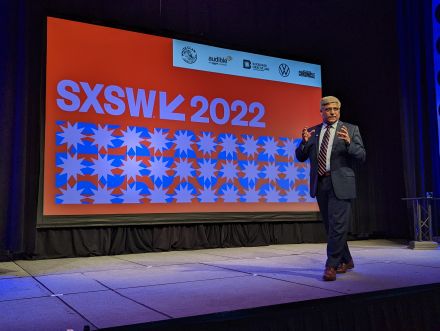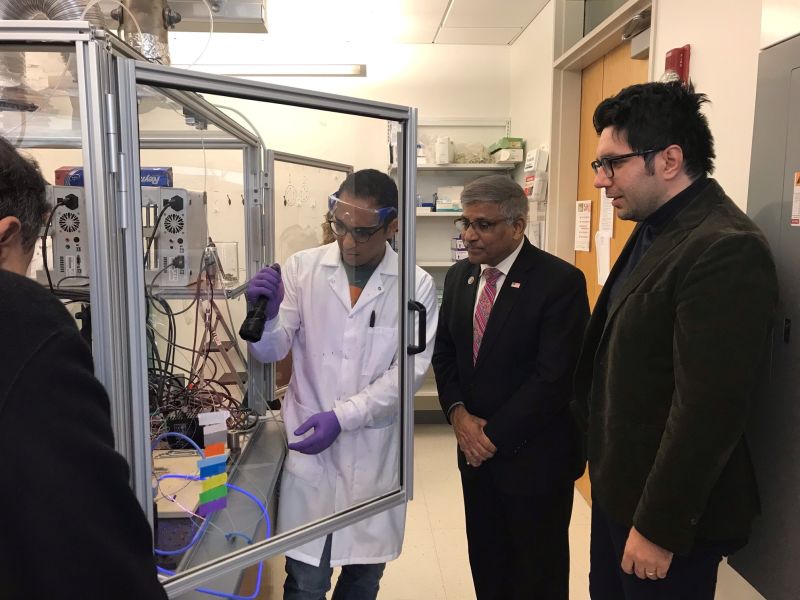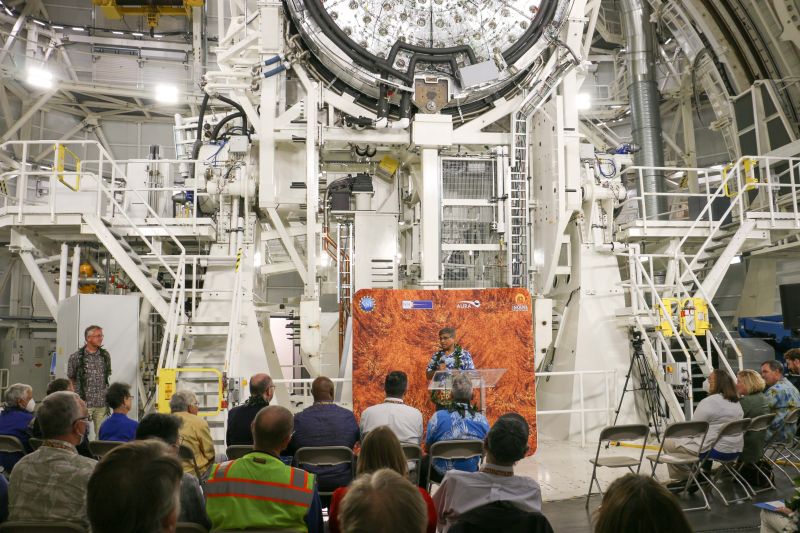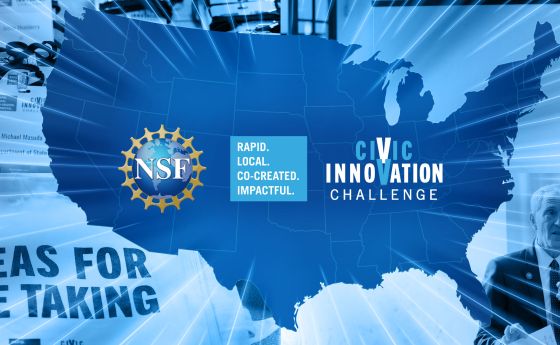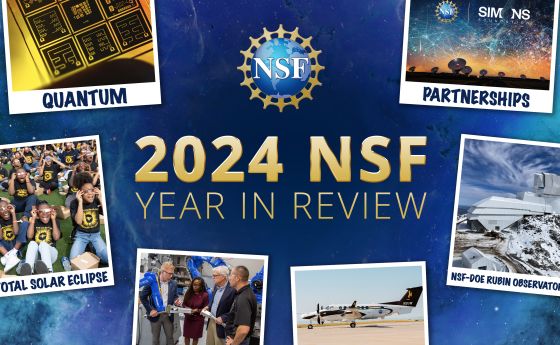
NSF 2022: Transformational developments that benefit society
In 2022, the U.S. National Science Foundation powered a diverse range of discoveries and innovations that will benefit humanity. This year also positioned NSF to accelerate its work, in the words of Director Sethuraman Panchanathan, at speed and scale.
Congress passed the bipartisan “CHIPS and Science Act,” a watershed moment for U.S. innovation and industry. It unlocks investments in U.S. science and engineering by authorizing Congress to more than double the NSF budget over the next five years. A significant show of support for the work started in the act is NSF’s FY2023 appropriations. At $9.9 billion, it is the largest percentage increase in over two decades and the largest dollar increase ever.
The "CHIPS and Science Act" codified NSF's first new directorate in more than 30 years: Technology, Innovation and Partnerships, or TIP, to nurture public and private partnerships across the nation to accelerate innovation. Through TIP:
- NSF and Intel launched a unique program to support research and workforce development in advance semiconductor design and manufacturing. With a $50 million dollar commitment spanning a 10-year period. NSF is also partnering to support of research, education, infrastructure capacity building and workforce development.
- NSF announced the creation of five new I-Corps Hubs. Each is funded for up to $3 million per year for five years and comprises a regional alliance of at least eight universities. These hubs increase the operational backbone of the National Innovation Network, which is helping to translate fundamental research results to the marketplace.
- NSF's Convergence Accelerator is tackling ocean-wide challenges related to the blue economy through a $30 million investment. Six multidisciplinary teams are each addressing an important issue related to climate, sustainability, food, energy and pollution across our world's oceans.
The "CHIPS and Science Act" also outlines investments that help scale up pre-K-12 STEM education innovations and authorizes new funding for STEM education, and NSF is thrilled to join the first-ever coordinated, national effort to help achieve a more equitable science and technology ecosystem. NSF is supporting STEM equity and excellence through programs like:
- Experiential Learning for Emerging and Novel Technologies, a $30 million workforce development program to help adults from historically excluded communities to pivot or break into emerging technology fields.
- NSF Research Traineeship, a $58 million investment, including $6.9 million from the American Rescue Plan, to assist graduate students in research-based master's and doctoral degree programs in developing the skills needed to pursue a range of STEM careers, including AI and quantum research.
- Non-Academic Research Internships for Graduate Students supports hundreds of thousands of graduate students training in semiconductor and microelectronics. In 2022, NSF and the Department of Energy launched a joint training opportunity in the area of geothermal energy through the program.
NSF continued to enable breakthrough scientific discoveries through its funding of a wide array of infrastructure around the globe.
In May, astronomers unveiled the first image of the supermassive black hole at the center of our own Milky Way galaxy. The image of Sagittarius A* was produced by the Event Horizon Telescope Collaboration, with key funding provided by NSF. And in November, astronomers using the International Gemini Observatory, operated by NSF's NOIRLab, discovered the closest-known black hole to Earth. Just 1,600 light-years away, it offers an intriguing target of study to advance our understanding of the evolution of binary systems.
The agency continued to enhance and expand its research infrastructure during the year.
- NSF inaugurated the Daniel K. Inouye Solar Telescope, which will capture high-resolution images that will transform how astronomers predict and prepare for events like solar storms.
- NSF reopened the Natural Hazards Engineering Research Infrastructure shake table, the world's largest experimental earthquake infrastructure facility, which enables engineers to simulate earthquakes under a full range of motion. The upgraded shake table is part of the NSF NHERI program, which provides researchers access to large, shared facilities to study natural hazards and the performance of civil infrastructure.
- FEMA held a press conference at the NSF-funded Wall of Wind Experimental Facility at Florida International University to announce a new initiative by the Biden-Harris administration to modernize building codes, improve climate resilience and reduce energy costs.
- R&D Magazine recognized the 32 Tesla Superconducting Magnet at NSF's National High Magnetic Field Laboratory at Florida State University as part of the 2022 R&D 100 Awards. This revolutionary facility gives researchers unprecedented access to high-magnetic fields, enabling cutting-edge research at the frontiers of quantum information science and engineering.
NSF also continued to make advancements across all scientific and research disciplines.
- NSF grantee researchers at the Massachusetts Institute of Technology developed an approach that increases computing speed by 12% by enabling computer memory hardware to be shared without compromising security.
- Neuralert Technologies, an NSF-supported startup, was named to Time magazine's list of The Best Inventions of 2022 for its lightweight, non-invasive wristband that can detect most strokes within 30 minutes. Rapid detection can speed assessment and effective treatment, save lives and improve health outcomes.
- NSF and the Paul G. Allen Family Foundation announced the Partnership to Advance Conservation Science and Practice program to create collaborations between academic researchers and conservation practitioners to support research focused on conservation science.
- NSF unveiled a $104 million investment to launch four new Engineering Research Centers focused on developing sustainable technological solutions for agriculture, manufacturing, health and urban planning.
- NSF also announced a new investment of over $37 million in Resilient and Intelligent Next-Generation Systems, a public-private partnership focused on the development of intelligent, resilient and reliable NextG networks.
All of these groundbreaking discoveries and life-changing innovations are driven by people and NSF remains proud to support the researchers behind these efforts.
One of the most prestigious and enduring examples of NSF's mission and impact on the entire range of fundamental research is the 259 Nobel Laureates whose work has been supported through NSF investments. More talented researchers who have been supported by NSF at multiple stages of their careers were honored in 2022:
- John Clauser, Anton Zeilinger and Alain Aspect were honored with the Nobel Prize in physics for their experiments with entangled photons and for pioneering quantum information sciences. NSF is proud to have supported Zeilinger's experiments demonstrating quantum entanglement as well as Aspect's collaborations with researchers in the U.S.
- Carolyn Bertozzi, K. Barry Sharpless and Morten Meldal were recognized with the Nobel Prize in chemistry for the development of click chemistry. NSF invested in this Nobel Prize-winning research as well as the work that led to Sharpless' 2021 Nobel Prize. NSF has also supported Bertozzi and Sharpless' careers, including Graduate Research Fellowships to both scientists and a CAREER award to Bertozzi.
- Philip Dybvig, Ben Bernanke and Douglas Diamond were honored with the Nobel Prize for economics for their work researching the critical role of banks during modern financial crises. NSF has invested in the research of both Bernanke and Diamond for several decades, including Bernanke's Graduate Research Fellowship in 1975.
The MacArthur Foundation awards, or “Genius Grants,” are one of the most prestigious awards given across academia, the arts and sciences. In 2022, NSF supported nine of the 25 MacArthur Fellows, who each received an $800,000 investment in recognition of their contributions to their field of study and in support of their future careers.
NSF ranked second among mid-sized federal agencies for the best places to work in the federal government and these are just a few of the groundbreaking, NSF-powered events that occurred in 2022. To read more, visit Science Matters.

